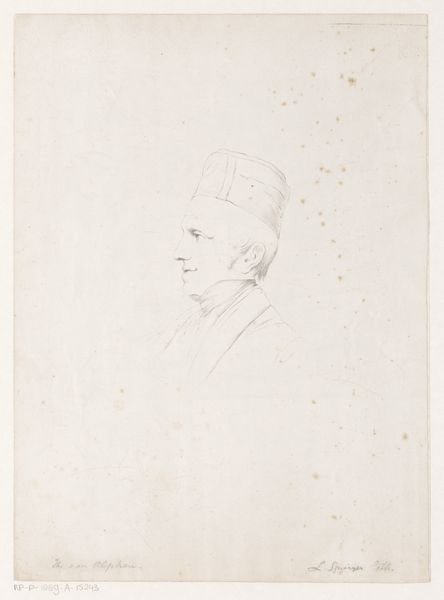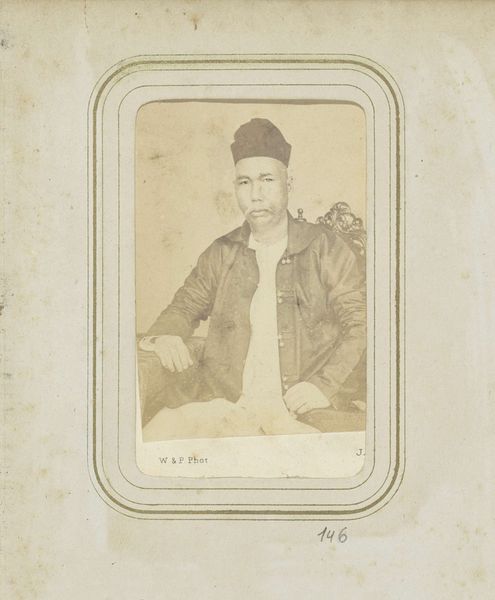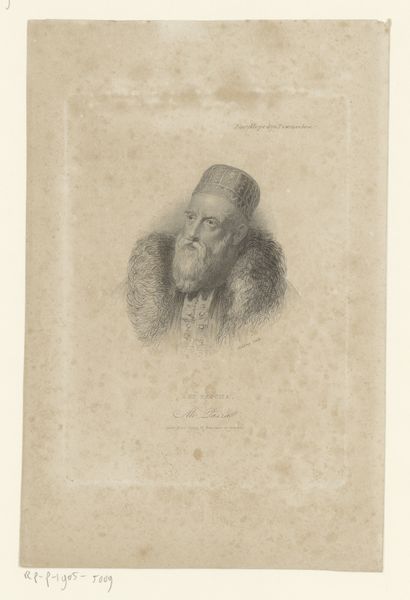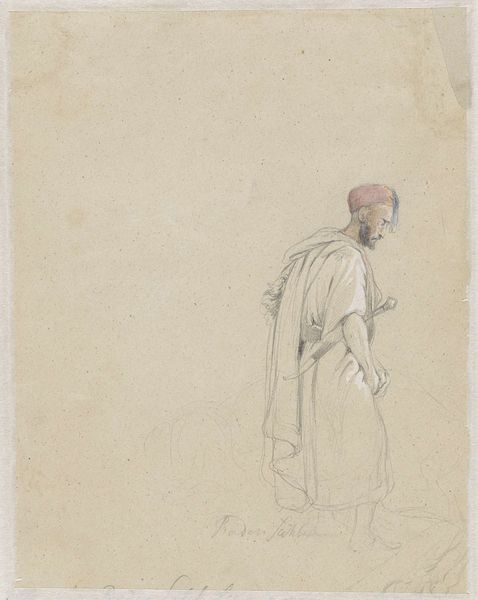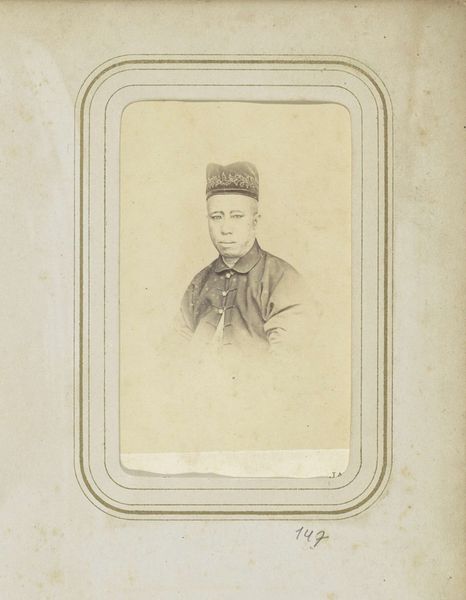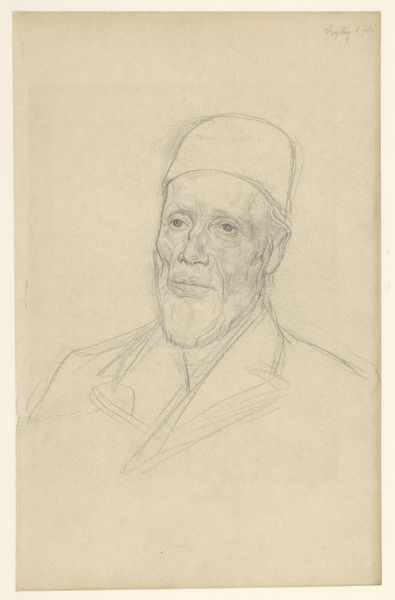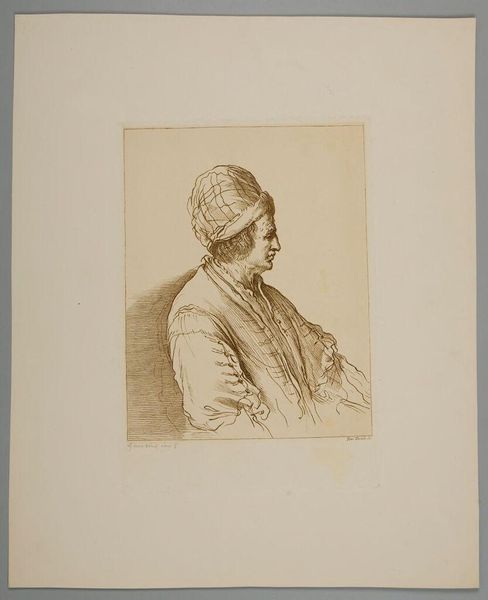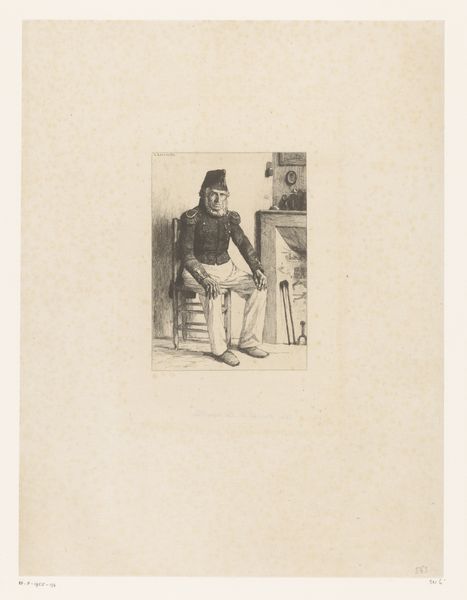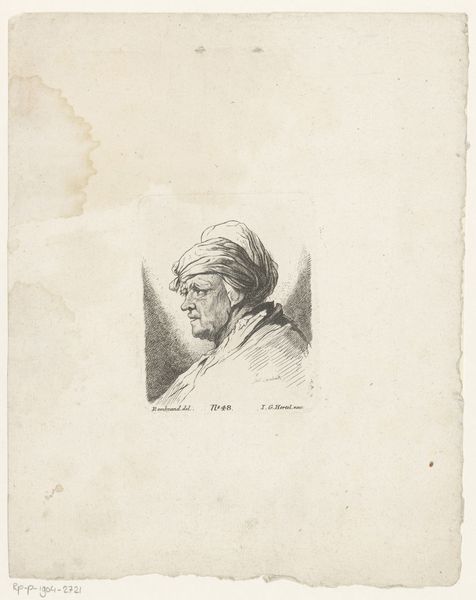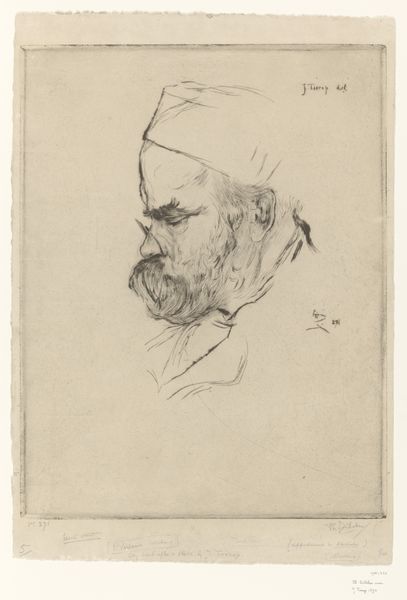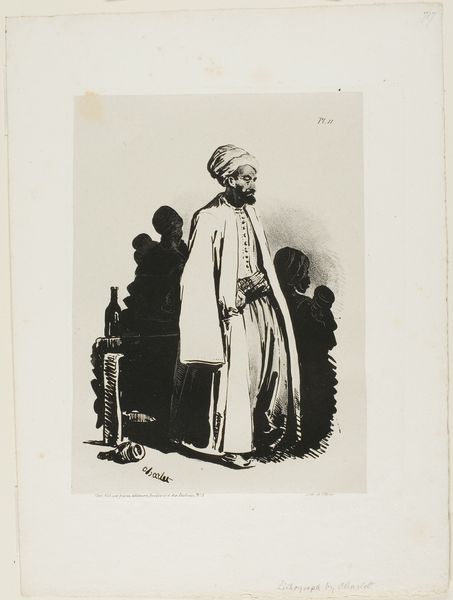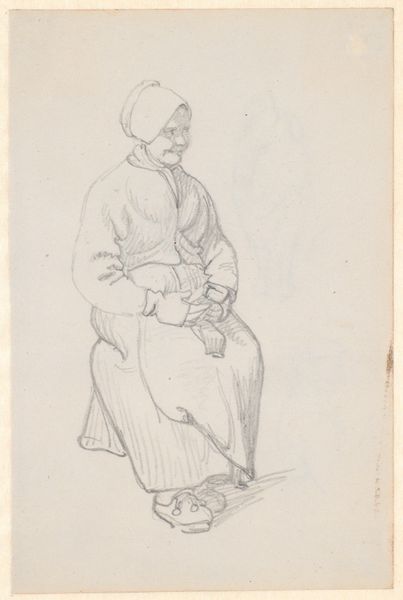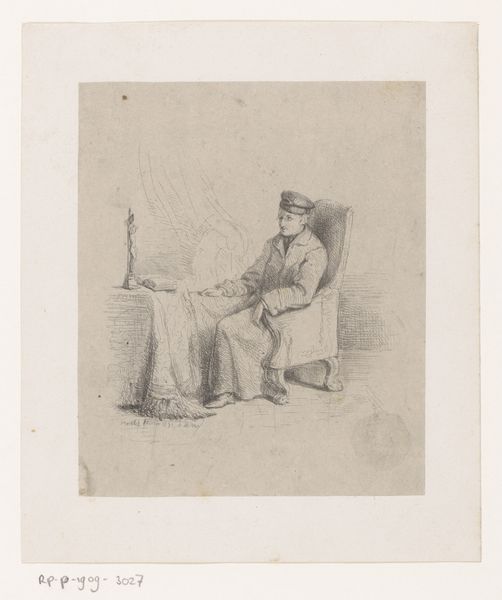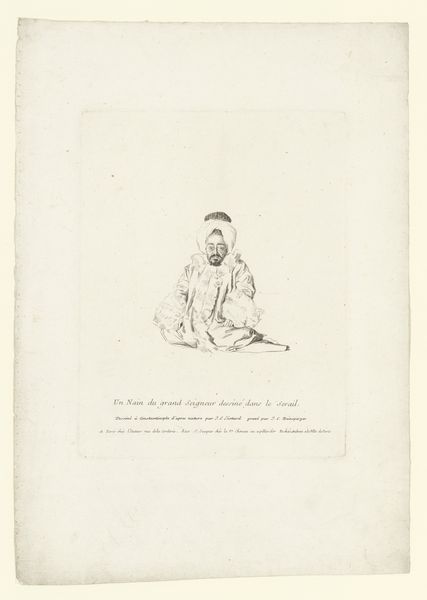
drawing, paper, pencil
#
portrait
#
pencil drawn
#
drawing
#
16_19th-century
#
pencil sketch
#
paper
#
pencil
#
pencil work
#
realism
Dimensions: height 329 mm, width 241 mm
Copyright: Rijks Museum: Open Domain
Curator: Looking at this sensitive pencil sketch, "Portret van Daniël François van Alphen" created sometime between 1840 and 1871 by Leendert (I) Springer, I immediately notice its quiet intimacy. Editor: My first impression is how this unassuming drawing speaks volumes about the social position and perhaps even the character of its subject during that time. The profile view and his somewhat severe expression... what do you make of that cap? Curator: The cap indeed tells a story. It's not merely a hat but likely signifies membership within a specific societal group or even a uniform, revealing much about status and affiliations within the prevailing social structure of 19th-century Netherlands. Consider it a potent symbol. Editor: Exactly. Symbols of power, belonging and exclusion often dictated lived experience, right? And I find the very medium intriguing—the delicacy of pencil on paper almost communicates a tentative reaching across social divides, a controlled visibility. Curator: Yes, the restraint within the drawing reinforces its function as a controlled representation. There’s very little flourish; all energy is channeled toward depicting the gentleman in a particular light, underlining values of respectability and order inherent in portraiture of this era. Editor: Which also makes me wonder who commissioned this and to what end? Was it self-commissioned? A gift? I find myself immediately questioning the implicit power dynamics at play—the politics embedded within portraiture, beyond the subject’s sartorial symbols. The lack of idealization is somewhat surprising given that era, though, right? Curator: You're quite right to point that out. Although classified under "realism" the overall restraint perhaps tells us something about both subject and artist. The symbols and pose become all the more suggestive. This work offers fertile ground for continued reading and debate. Editor: Agreed, it leaves you pondering on all of the unseen, unrepresented influences at play—a starting point for further inquiry. It would be very rewarding to dive deeper into this man’s context within 19th-century Dutch society, its colonial entanglements, etcetera.
Comments
No comments
Be the first to comment and join the conversation on the ultimate creative platform.
